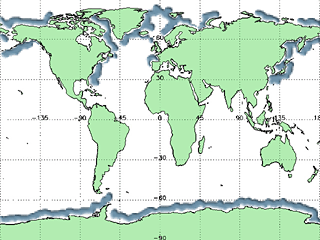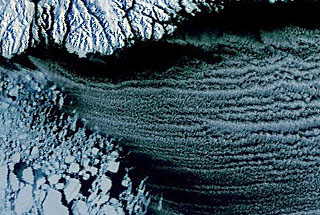|
| Home |
|
See how
clear and bright
|
| Introduction |
|
Is the
moonlight finding ways
|
| Contents |
|
Through
the riven clouds
|
| Links |
|
That,
with drifting autumn wind,
|
| Impressum |
|
Gracefully
float in the sky.
|
| Download |
|
Sakyo
no Daibu Akisuke
|
|
Observation Diagrams
|
|
Home > Contents > 'Convection Cells Streets' Phenomenon - Description |
|
 |
 |
MANUAL OF SYNOPTIC SATELLITE METEOROLOGY |
The
Ekman Layer |